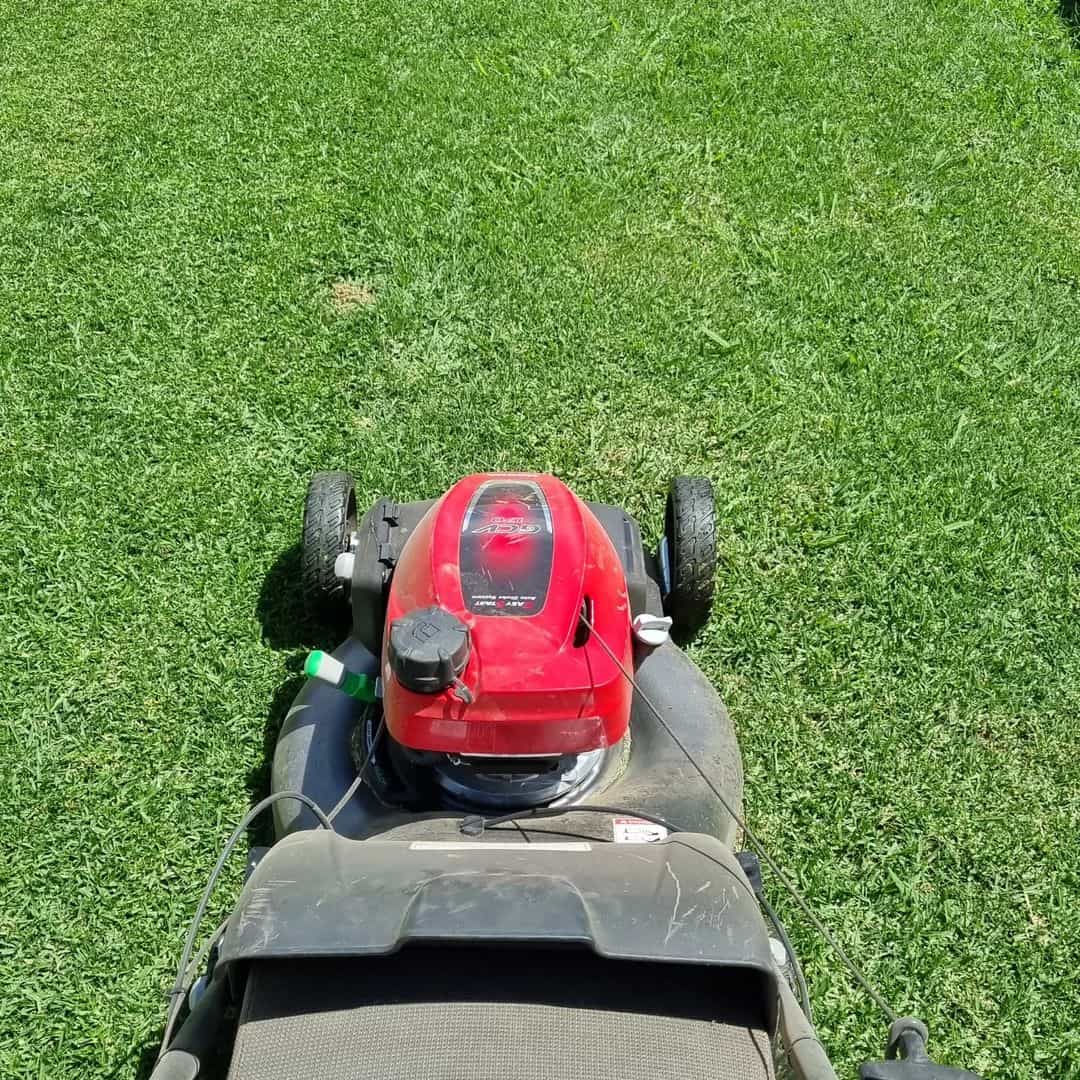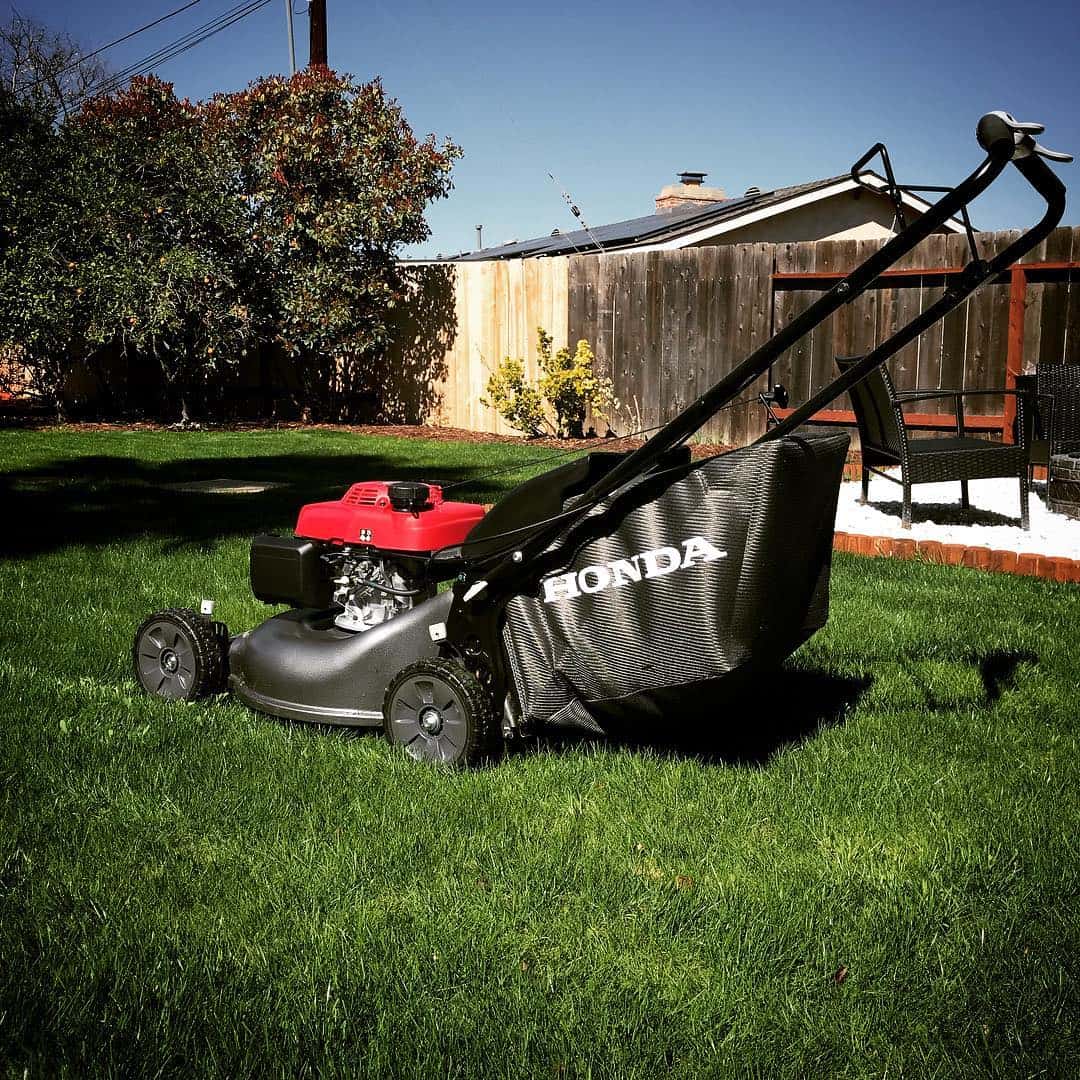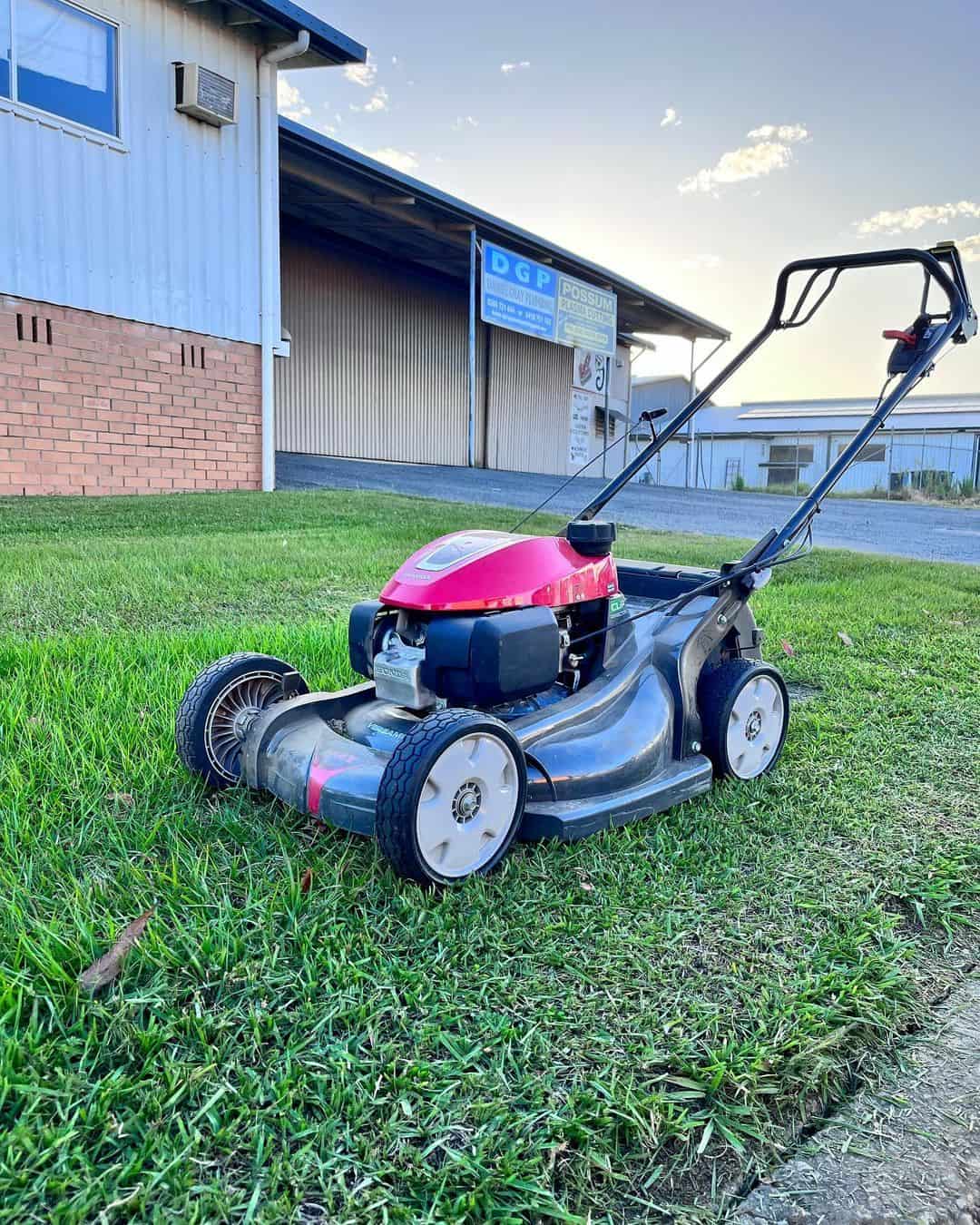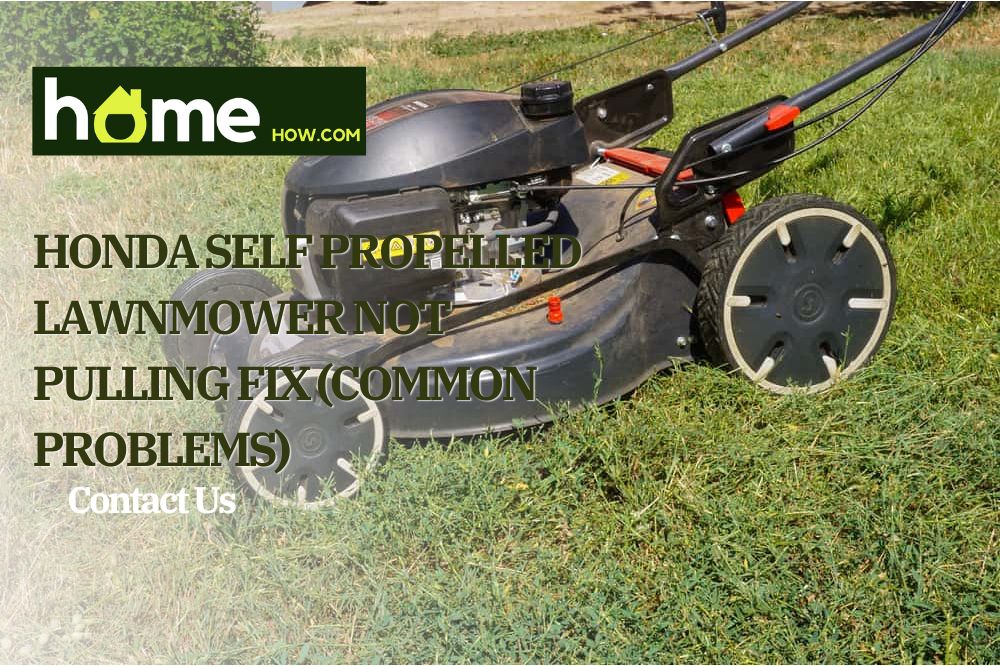It’s summer, and your lawn is long overdue for trimming. Excited to do some quality mowing, you quickly pull out your trusty Honda mower, only to find your lawnmower refusing to work. Distraught, you try to find a fix on a Honda self propelled lawnmower not pulling.
Thankfully, you stumbled upon this article, and soon, your beloved Honda lawnmower will be back to life in no time. We’ll touch upon all possible fixes and solutions to revive your mower and you can get back to your scheduled therapeutic lawn mowing.
Issues with Honda Mower Not Pulling
A Honda lawnmower is a machine composed of many parts working together to fulfill its duties. If a single one of those parts fails to function, it is likely that the entire machine will come to a halt, too. To fix a non-functioning mower, we need to check each part and see where the failure is.
We will troubleshoot each major component, starting from the most likely reason and easiest to fix to the more complex problems with sophisticated solutions. If worse comes to worst, pray forbid we reach that point, you might need to buy a brand new mower instead.
Also, for safety concerns, unless the repair requires the mower to be turned on, make sure that you have turned off the gas and pulled the plug wire off.
Standard Fixes and Checks
Sometimes, we might have missed some routine maintenance and checkups on our dear trusty mower, so it’s complaining by halting until you find which component needs to be looked at.
If you feel like your mower is pulling irregularly or not moving smoothly, it might just be a mechanical issue with your transmission. A few drops of lubricant oil on the transmission might smoothen the rough edges that it is getting stuck on.
You might also want to check the air filter. A dirty air filter will let out less air to the piston chamber, which might hamper normal operation. Since gardens are pretty dirty environments for the mower to work on, you might want to clean the filter ever so often.
Perhaps it might be time for the yearly change on your spark plugs. Your self-propelled mower’s engine might not be getting enough fire to spark it. Get the spark plugs that match your mower and readily replace them.
If not of these routine checks do not fix your self-propelled lawn mower, then it’s time to delve into the nitty-gritty of your mower to find out exactly what’s wrong with your machine.
Other Common Problems With Your Honda Mower

1. Wheel Assembly
You might want to do a quick check on the wheels of your mower. Simply checking whether the wheels are in good condition and whether something might be obstructing the wheels from fully turning can be the fix to your problem.
2. Drive Cable
The most common reason for a nonfunctioning mower is usually a drive cable issue. The drive cable is responsible for engaging the transmission to move the lawn mower across the grass. If the drive cable is stretched too much, your mower will move slower and slower.
Thankfully, the drive cable often comes equipped with an adjustment screw, which allows you to adjust the slack of the inner braided cable. Depending on the mower that you have, you can easily find this adjustment screw somewhere across the length of the drive cable itself.
HRX
The HRX has its adjusting nut mounted on the speed control panel. Before you adjust this screw, you first need to set the speed to high. Then, you need to loosen a lock nut which should allow the cable to be adjusted. You need to prepare a wrench to loosen this nut.
Once the lock nut is free, you simply need to pull on the cable until you no longer feel the slack. Tighten the lock nut again, and test if the mower can run in reverse. If you over-adjusted the cable, the mower will have a hard time running in reverse. Simply redo the previous step and adjust as necessary.
Smart Drive
The Honda Smart Drive has a more straightforward adjustment screw. You’ll easily find it halfway down the left-side handlebar. The adjustment screw still has a lock nut, which still needs a wrench to be loosened.
Once the lock nut is free, you just need to turn the long adjusting screw. This pulls the slack from the cable. As with the similar case with the HRX, an over-adjustment will not allow the mower to move backward. Adjust accordingly, then tighten the lock nut once you’ve found the sweet spot.
3. Drive Belt
Drive belts work hard and long on a lawnmower. Of course, they were developed to withstand the usual forces that they are subjected to, often for years. However, as a mechanical part, they are still bound to experience wear and tear after continuous use.
A loose or worn-out belt will start to slip off, which will disconnect the engine power from the wheels, and the machine will not be able to run at all. A drive belt that makes a lot of noise or one that vibrates too much may also be a sign that you need to get it replaced.
You may want to refer to your specific Honda model to know where to locate the drive belt. You’ll usually find it under a cover on the side where the air filter is. Once you find the belt, feel the length if it is loose. If you can see that the belt deflects more than half an inch, the belt might be past its prime.
Prepare your mower’s model when buying a new drive belt. Better yet, you can bring the entire drive belt so that you can get the exact copy at the store.
4. Drive Axle Pins

Now that we’ve ruled out superficial issues, we can get into the innards of the lawnmower. A common point of failure once we get into the mower’s axle is its driveshaft pin.
The driveshaft pin holds the gears in place with the axle. During operation, this pin experiences a lot of torque stress as it transfers the power from the transmission to the wheels. These little guys are prone to wearing out all the time, but at least they can be easily replaced.
5. Drive Pulley
We are at the point of the troubleshooting process where a mere homeowner such as yourself may have to delegate certain fixes to more experienced experts. This is especially true when you are checking the drive pulley.
The drive pulley is the component that allows the transmission to engage the wheel assembly. If this gets worn out or damaged, it may be unlikely for you to replace it yourself, since you will need specialized tools that may not be readily available.
We recommend that you reach out to an engine repairman to swap out the pulley with a new one.
6. Transmission and Gears
We are now checking the heart of the mower, which is the transmission/axle system. Honda mowers are generally equipped with durable transmission systems that last for quite a long time. But a long time is still bound to come to an end.
If you see some damage on the gears, then you might be out of luck for today. The gears are part of the entire transmission/axle system. You cannot swap out the gears, and replacing the entire system is costly.
Although changing the transmission can be pretty simple, we recommend that you either leave this job to professionals who can replace your transmission with the right one, or simply buy a new mower.
Costs of Fixing the Lawnmower

Depending on the part that needs to be replaced, you can expect to pay around $80-$120 just to procure the replacement parts themselves. Additionally, professional fees can go around $30-$50.
If you had to leave your mower at the repairman’s shop for a few days, you might also be charged a flat shop fee (around $50-$60), then a storage fee of around $10-$20 per day on the shop.
Counting all these fees together, you can expect to pay fees north of $200. This is not even considering a full transmission swap, which usually costs around $400-$500 for the replacement transmission itself.
Of course, many of the fixes for the lawnmower are actually things that a dedicated DIYer can handle, so you may be able to save up on costs if you put in the effort of repairing the machine yourself.
Conclusion
If you’ve had your Honda lawnmower for quite some time now, it can be inevitable for it to experience wear and tear. After all, it is a mechanical machine that works hard to keep your lawn trimmed. With continued use, some parts are bound to break down.
Depending on the component that broke, you might be able to squeeze a bit of life out of your mower by simply replacing the broken part. However, when the expenses reach a certain threshold that breaks through your budget, and when you believe that your Honda mower has served its time with you, you might want to consider a new mower for this summer.
